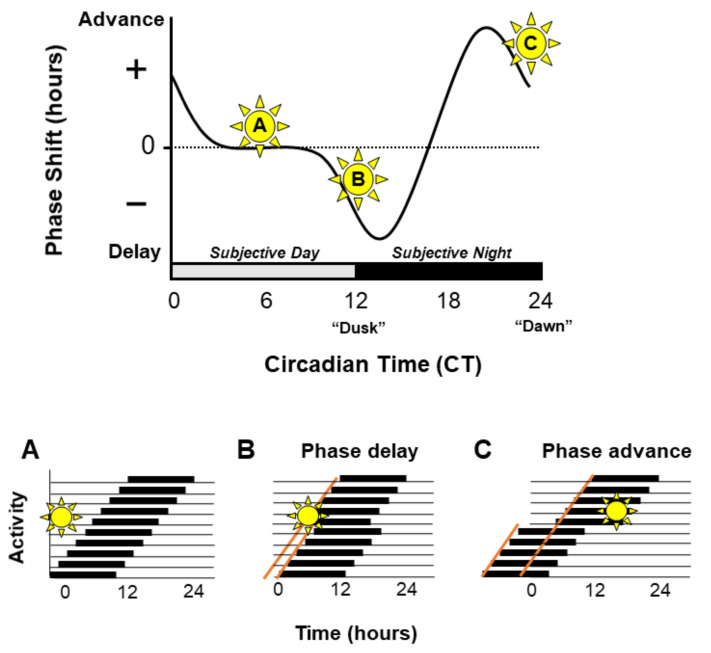Figure 2.
The phase response curve. The phase response curve demonstrates the effect of light exposure at different times of the circadian cycle on the phase of the circadian clock. Light delivered during the subjective day, the ‘dead-zone’ will have no effect on the phase of the clock (A). Light exposure during the early subjective night will lead to delays in the phase of the clock (B). Whereas light exposure at the end of the subjective night will lead to phase advances (C). This is demonstrated by representative actograms showing free running rest/activity rhythms (panels A–C); black bars represent periods of activity and black lines indicate rest.

